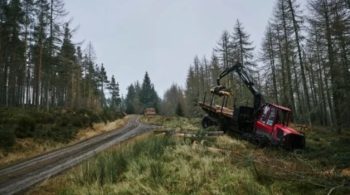A consortium of research partners in Scotland are developing an internet of things (IoT) sensor network that provides real-time monitoring of rural road conditions.
DigiFlec, a start-up based in Dunfermline, is working with CENSIS – Scotland’s innovation centre for sensors, imaging systems, and IoT technologies – and Forestry and Land Scotland (FLS) as part of the Scottish Government’s CivTech 6 Accelerator Programme to develop a digital transport network management interface.
The initiative combines the digital mapping of the road network alongside IoT-enabled sensors deployed to capture live data about the condition of the FLS road network. The data includes readings on temperature, moisture in the road, and potential culvert blockages.
FLS has a 10,000 kilometre road network covering some of the most remote areas in Scotland, largely made up of unsealed roads that become weaker when wet and can be easily damaged by flooding.
Having accurate real-time information about conditions will allow better informed decisions about road use at particular times. IoT sensors have so far been deployed in test locations on roads in Blairadam and Auchineden to gather and transmit information about the road.
The data will be integrated into a digital interface that displays the data in real time, as well as any long-term changes to the road’s condition. This will enable better maintenance scheduling and, ultimately, provide greater knowledge of the factors that impact a road’s deterioration, allowing decisions to be made to prevent excessive damage and better allocate resources for repair and upgrade work.
Reliable data gathering and the capability to deploy sensors in remote and rural areas could have wider applications for public road network management. Roads currently need to be checked manually, racking up potentially hundreds of miles of travel.
While motorways and A roads are inspected annually for defects, B and C class roads are only examined every 4-20 years. Recent reports suggested that the backlog of repairs required for Scotland’s road network could cost as much as £1.7 billion.
Steven Gillan, director at DigiFlec, said: “Local authorities and landowners currently face a paucity of information about the conditions on their roads. A big part of the reason for that is the time and costs involved in gathering data. This makes it difficult to make good decisions about where to focus efforts, and maximise time, material, and resources.
“Yet, Scotland has a working countryside with everything from heavy industry to the hospitality sector using roads alongside residents. The road system needs to serve all of those sectors’ needs whilst being usable for communities going about their day-to-day lives.
“Our system allows the people managing roads to better understand their condition, which is key to making road infrastructure a better experience for everyone.”
Source: DIGIT

